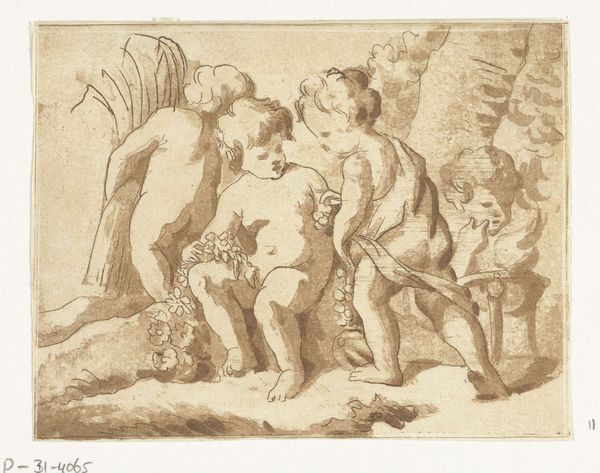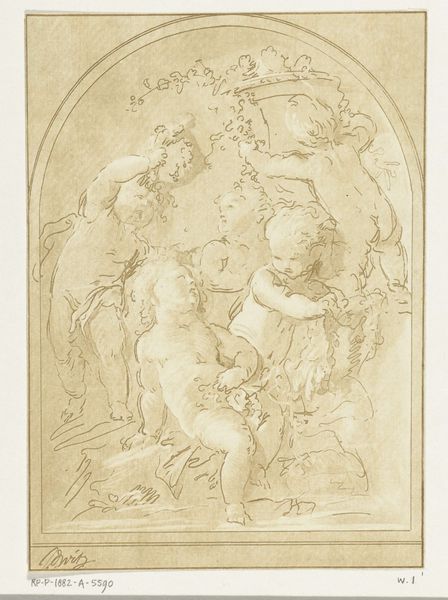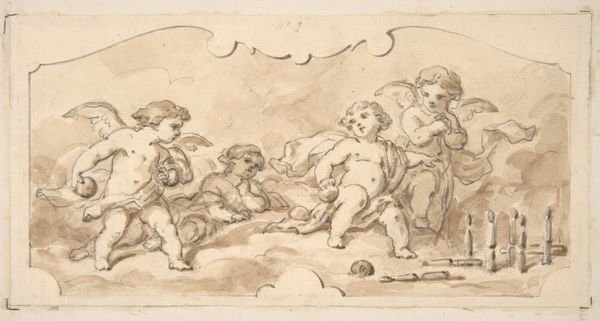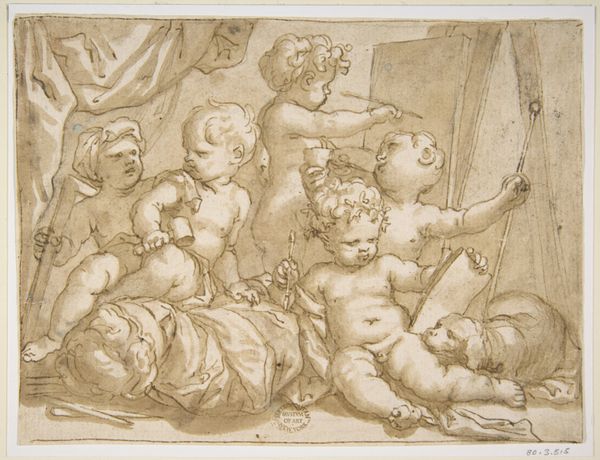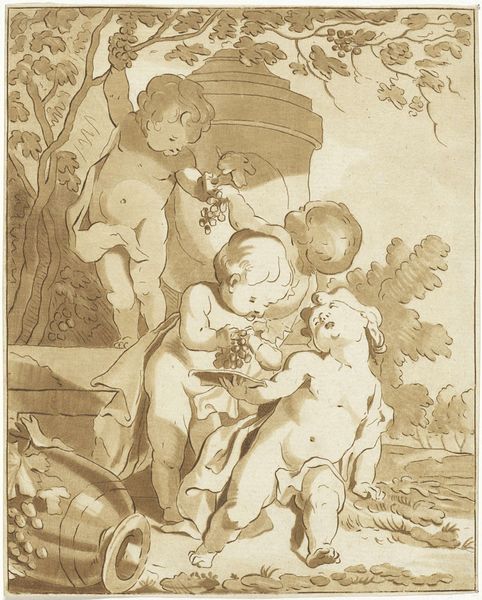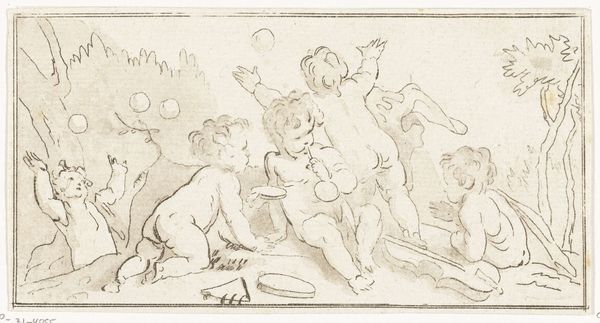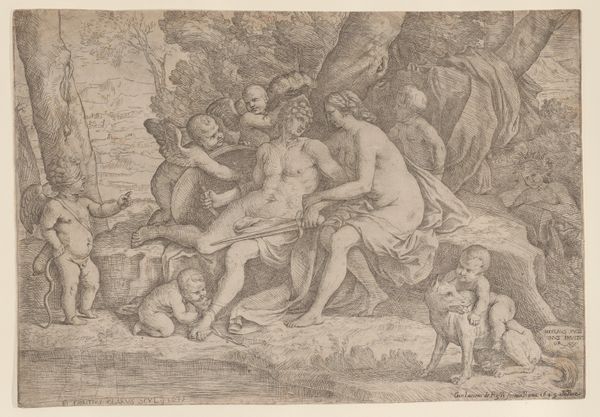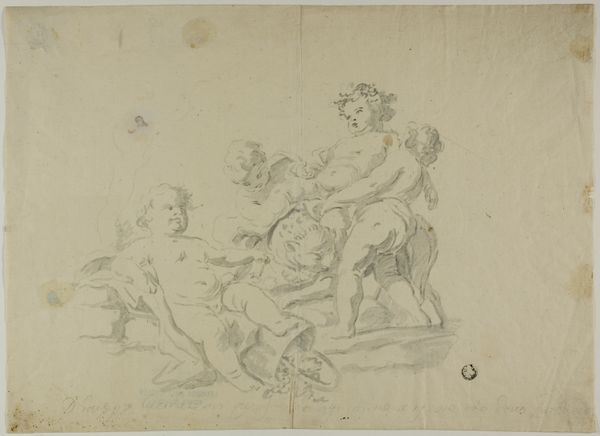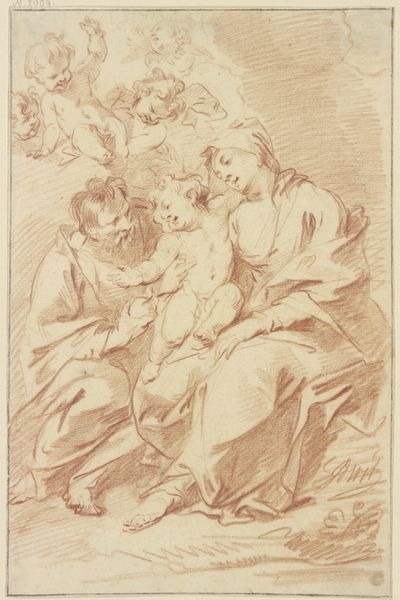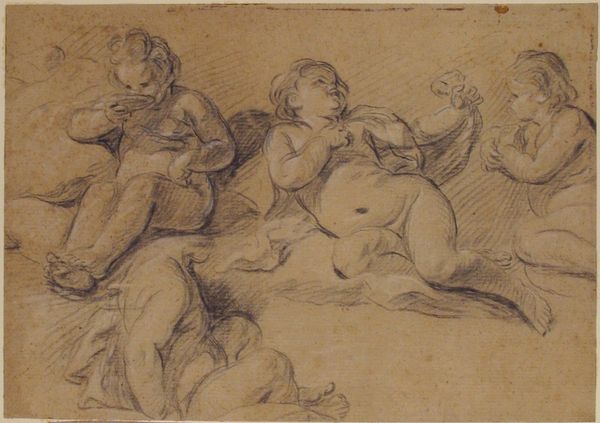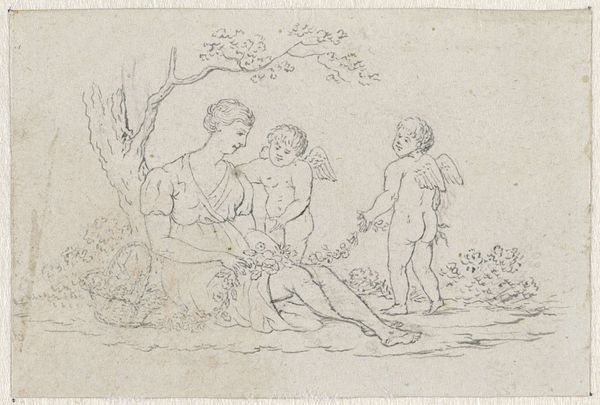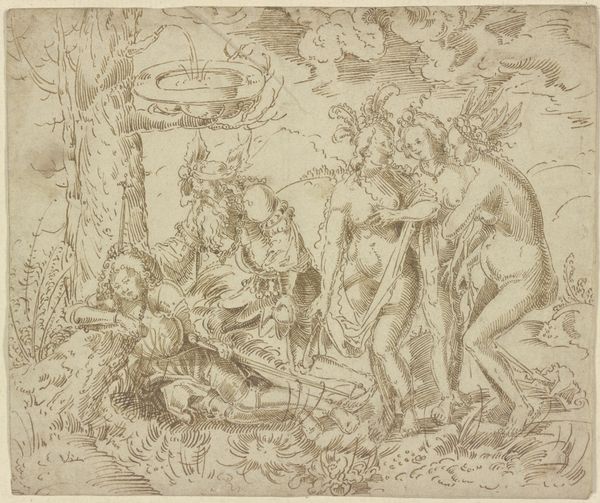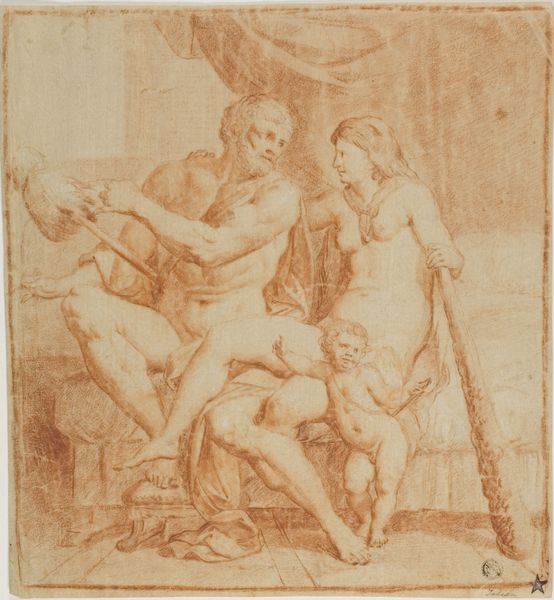
Dimensions: height 80 mm, width 100 mm
Copyright: Rijks Museum: Open Domain
Anthonie van den Bos created this pen and brown ink drawing called "Four Seasons Represented by Four Children" in the Netherlands sometime before 1838. The Rijksmuseum holds this work that depicts cherubic children symbolizing spring, summer, autumn, and winter. Representations of the seasons were very common in the 18th and 19th centuries. Many artists were commissioned by wealthy patrons to depict the seasons. The seasons have been used to represent nature, the circle of life, and as a reminder to live in harmony with the natural world. But there is more to it. The tradition of making art for private consumption was starting to come under pressure from an emerging idea that art should be for the people, to play a public role as a source of education and moral uplift. As historians, our job is to look into the social conditions that shaped artistic production. We can research patronage, art criticism, and exhibition records to understand how art was perceived and valued in its own time. Art is contingent on its social and institutional context and understanding this is key to unlocking its deeper meaning.
Comments
No comments
Be the first to comment and join the conversation on the ultimate creative platform.
